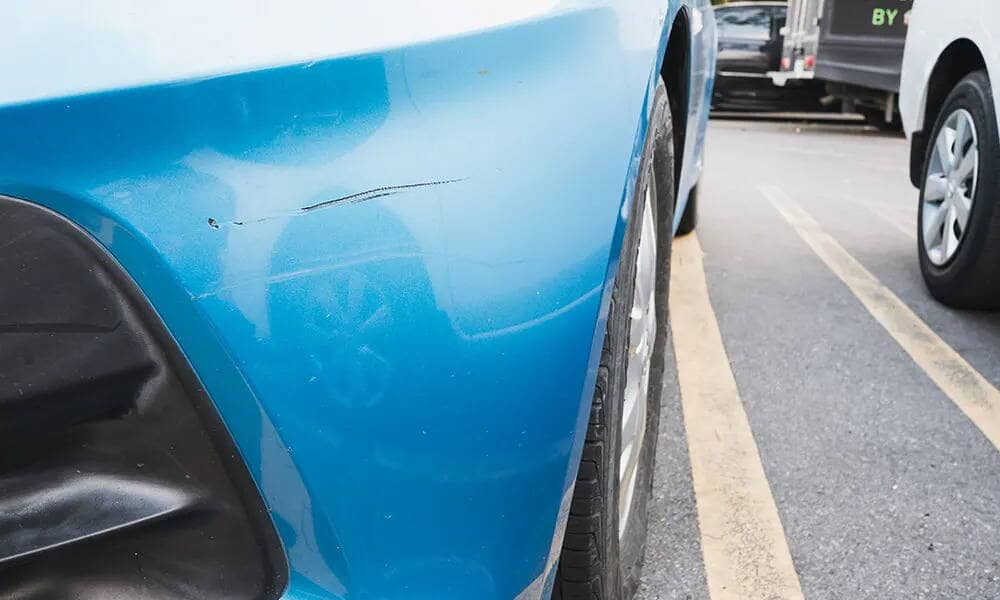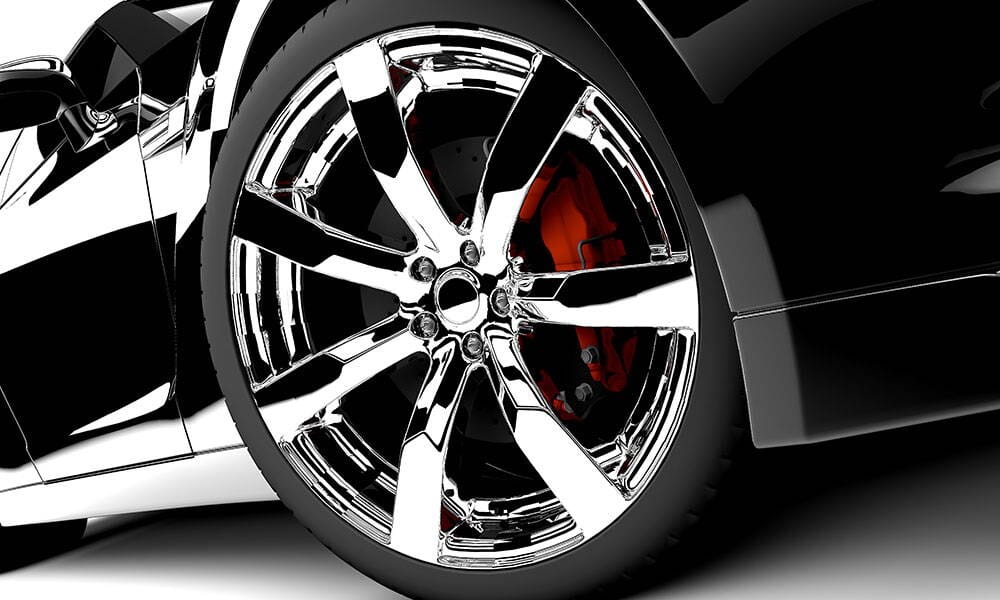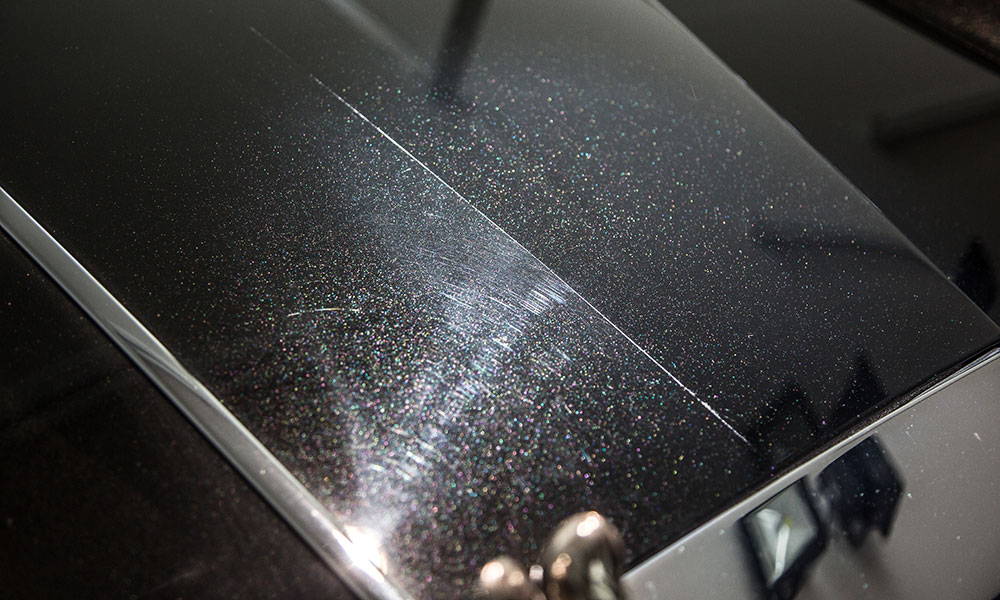There is a lot you can do to preserve the exterior of your car, but try as you may, your car is bound to get scratched or nicked at some point. That’s just life! Besides stealing away the glow and brilliance your car was initially designed to exude, scratches can also severely knock down your car’s resale value. The good news is that there are scratch repair solutions that can help to rectify such scratches. This article will explore how much such repairs may cost.
When you notice scratches, however small they are, try to address them as soon as you can, since scratches can quickly develop into greater problems in your car’s bodywork.
Recommended Read: How To Repair ALL Kinds of Car Scratches
Reverse is the newest car detailing product that easily removes scratches and swirls by hand. This car scratch remover and car paint scratch repair compound will bring your paint back to new. It's also a water spot remover and swirl remover. Make paint correction easy with this all in one formula.
- Repair car scratches, swirl marks and water spots.
- Will also remove oxidation, spider marks and paint imperfections.
- Works by hand, no fancy tools needed.
Common Causes Of Car Scratches
Car scratches can be caused by a multitude of factors, many of which are related to how you care for your car, how you drive it, and the nature of the areas where you drive. Many times, it’s hard to determine the causes of these scratches because they’re often inflicted when you aren’t paying attention. Here are some of the most common causes of car scratches.
Improper Washing And Drying
Many car owners don’t realize just how much they damage the paintwork of their cars when they insist on using improper car washing and drying methods. Many people use the wrong materials, e.g. regular towels and cloths that are too abrasive for car paint. Also, when wrong cleaning procedures are used, dirt may get trapped in the cleaning aids and cause swirl marks and scratches when pressed against car paint.
Automatic Car Washes
Yes, automatic car washes will hurt your paint job. Automatic car washes can wash hundreds of vehicles in a day, but bits of dirt and grime from those vehicles accumulate in the brushes of these automatic car washes. These dirt accumulations are seldom well removed, and so they end up being rubbed on the surfaces of other vehicles, causing unsightly scratches. The best way to wash your car is by hand.
Rocks And Road Debris
In areas with bad, broken-up roads or in places with ongoing construction, car scratches can also be caused by rocks and road debris. These small rocks/pebbles or bits of road debris can get trapped in tire treads and hurled into the air at other vehicles on the road. The scratches caused by such flying rocks and road debris are often deep because of the speeds at which they get kicked up.
Rubbing Against The Car
In areas with bad, broken-up roads or in places with ongoing construction, car scratches can also be caused by rocks and road debris. These small rocks/pebbles or bits of road debris can get trapped in tire treads and hurled into the air at other vehicles on the road. The scratches caused by such flying rocks and road debris are often deep because of the speeds at which they get kicked up.
Rubbing Against The Car
It’s also easy to accidentally rub things against the surface of the car and cause scratches, e.g. when your hands are full and you’re trying to open the door, or when you’re leaning against the car with your keys in your hand. When you park too close to trees and hedges, branches and twigs can also rub against the surface of the car as they sway in the wind. The resulting scratches caused in these instances are usually just at the clear-coat level.
Car Accidents
Car accidents cause by far the deepest scratches, and as expected, these scratches are most significant at points of impact with other objects, e.g. cars, road barriers, trees, pedestrians, etc. Depending on the severity of the accident, the warranted scratch repair techniques may range from light paint/bodywork touch-ups to entire body panel replacements. Therefore, scratches caused by accidents tend to cost the most to fix.
Understand The Layers Of Your Car’s Paint; Understand The Damage
Reverse is the newest car detailing product that easily removes scratches and swirls by hand. This car scratch remover and car paint scratch repair compound will bring your paint back to new. It's also a water spot remover and swirl remover. Make paint correction easy with this all in one formula.
- Repair car scratches, swirl marks and water spots.
- Will also remove oxidation, spider marks and paint imperfections.
- Works by hand, no fancy tools needed.
Gaining an understanding of the different layers of your car’s paint will help you to know how to deal with the scratches on your car’s surface. Some scratches, depending on how deep they are, may require you to fully repaint your car’s exterior. Read our complete guide to car scratches for more information.
Most of today’s production vehicles have three layers of paint: the primer, the base coat, and the clear coat.
Primer
The primer, also called the undercoat finish, is the first layer of your car’s paint. Usually available in shades of grey or black, the primer goes directly onto your car’s metallic surface, and is meant to ‘prime’ or prepare your car’s surface for the actual colored paint (also called the base coat). When the base coat is applied onto a car’s surface without a primer, it doesn’t bond well with the metallic surface and usually ends up flaking off. The primer helps the base coat bond with the car’s surface.
Before the primer is applied, the surface of the car must be finely sanded to remove all imperfections, because the primer isn’t designed to cover such imperfections.
Base Coat
The base coat is applied on top of the primer. It’s just raw paint, so besides providing the main color of the car’s paint, it doesn’t do much else. It doesn’t have any strengtheners or hardeners, nor can it protect itself or the surface upon which it’s applied from moisture penetration or the sun’s UV rays. Therefore, it cannot be left as it is. A layer of protection has to be applied on top of the base coat; that protective layer is called the clear coat.
Clear Coat
The clear coat is the third, outermost layer of your car’s paint. Just as its name suggests, the clear coat has no color or pigment. It’s often made from urethane or polyurethane, and its main purpose is to protect and enhance the look of the colored paint underneath. It prevents moisture penetration as well as the sun’s UV rays from damaging the paint.
Wax/Coating Layer/Ppf
Another layer of protection on top of the clear coat will help to shield your paint from scratches. One option is a paint sealant. A paint sealant bonds with the clear coat, forming a barrier that repels water, resists scratches, and prevents damage from UV exposure. A good paint sealant also prevents dirt from clinging to the car’s surface. Many people also opt to apply natural or synthetic car wax on top of a paint sealant as an additional layer of protection. Besides helping to combat environmental damage, car wax gives your car a glossy shine.
Types Of Paint Scratches
No two scratches look the same because of the varying nature of the factors that cause them. As such, paint scratches are classified differently depending on their nature and severity. These classifications can help you to determine how much it may cost to repair the scratches on your car.
Scuffs
Scuffs occur when your car’s painted surface brushes or rubs against another painted surface - for example, when you’re backing out of your garage and the side of your car happens to brush against the painted garage door. Paint scuffs also commonly occur when one is getting into or backing out of tight parking lots. Scuffs transfer bits of paint, so in addition to handling the scratches caused, you also have to remove the transferred paint. For the most part, these scratches are light and superficial.
Clear Coat Scratches
Clear coat scratches are scratches that don’t go deeper than the clear coat. Being the outermost layer of your paint, the clear coat has to contend with rain, hail, wind, snow, and other environmental agents. Also, when objects are accidentally rubbed or brushed against the car’s surface, they scratch the clear coat. Therefore, clear-coat scratches tend to be the most common. Like scuffs, these scratches are generally inexpensive to fix.
Paint Scratches
A standard paint scratch is one that goes deeper than the clear coat, but not to the point where it exposes the car’s metal surface. These scratches cut through the base coat and may expose the primer, which is usually of a different color than that of the base coat. Therefore, paint scratches cannot be fixed by just buffing off the paint with a machine polisher.
Deep Paint Scratches
Deep paint scratches are the deepest scratches that can be inflicted on your car’s surface. They cut deep and expose the car’s bare metal surface. As expected, they cost the most to repair.
Where Can You Get Car Scratches Removed?
In those situations where your car’s scratches have to be attended to by professionals, you can either take your car to your local car dealership or an auto body shop. Many people opt for auto body shops because they’re often cheaper, and also because they’re likely to give the scratches on your car more detailed repair.
Car Dealership
Car dealerships can be pricey. Yes, they may specialize in the make of your car and may also have technicians who are trained for your car’s particular brand or model, but car scratch repair doesn’t require such specialized training. For just two ounces of VIN-matched paint, they may charge you $50 to $300. If you add the cost of having the body panel repainted at the car dealership, you may be looking at over $2,500 for a single body panel.
Auto Body Shop / Collision Shop
Auto body shops specialize in car body panel repair, and so they offer more experience and expertise in car scratch repair. They’re also likely to have more than one method of repairing the scratches. Finally, auto body shops tend to be cheaper.
How Professionals Remove Car Scratches
When you want perfect, showroom-finish results, full professional car scratch repair is the way to go. It involves first sanding the entire body panel that has scratches, then applying primer, then sanding and cleaning again, then applying the base coat with the correct OEM paint code, and finally applying several layers of clear coat. Both car dealerships and auto body shops can do this for you. Some of the other car scratch repair options that professionals may offer include the use of rubbing compounds, car scratch repair kits, touchup paint, and airbrushing.
The Cost Of Repairing Car Scratches According To The Type Of Scratch
Recent market studies have shown that the average cost for repairing a scratch on an average sedan is $630.46. As you would expect, it costs more to repair deep scratches than it does to repair light, superficial ones.
Light Scratches
Most light clear coat scratches can be removed using DIY car scratch repair products, DIY touchup kits, or rubbing compounds. According to Scratch Wizard, which specializes in selling such DIY touchup kits, it may cost between $150 and $300 to repair a clear coat scratch.
Deep Scratches (Requires Repainting)
Deep scratches are likely to require full professional car scratch repair, which as explained above, requires sanding, priming, more sanding, and repainting of the base coat and clear coat. If you decide to buy the sandpaper, paint, primer, and clear coat and do all the work yourself, you may end up spending between $600 and $1,500. If you enlist the services of professional mechanics, you’ll likely end up paying anywhere from $1,500 to $2,500.
Does Insurance Coverage Cover Car Scratches?
Yes, auto insurance covers car scratches, but only when the paint damage is a result of vandalism, a collision with another vehicle, weather/acts of nature, accidents with animals, or theft. In situations where car scratch repair has to be done on multiple sections or the entire car, auto insurance can save you a lot of money. Also worth noting is that when you file a claim for scratch repair, you’ll have to pay your deductible, which may be a significant amount. Therefore, it’s also wise to first establish how much it would cost to repair the scratches outside your insurance before you file a claim.
★★★★★ Kent F. (1989 Ferrari 328): "I wanted to get remove the small scratches and swirl marks on the original paint without having to repaint the car. I check with some companies that go over and restore the paint to the original color however they wanted one thousand dollars or more to do it. So I thought that I would try your product because of the success that other people using this product had.
I was very happy and impressed with the results and how it got rid of the swirl marks and scratches. It may the paint a darker color red and brought back more of the original color. I also used the clay bar solution first and then the correction compound. Then I used the Ceramic Spray to finish the car. It looks beautiful. Thank you for making such great products."

Conclusion
Ultimately, the cost of car scratch repair depends on the severity of the car scratches. You’ll save yourself a lot of money if you take steps to prevent car scratches in the first place, e.g. by not parking too close to other cars, by parking away from trees and thickets, by parking away from cart bins, and by using the recommended car washing/drying methods. Investing in car wax, a paint sealant, or a ceramic coating will also go a long way in helping to keep your car’s surface scratch-free.







